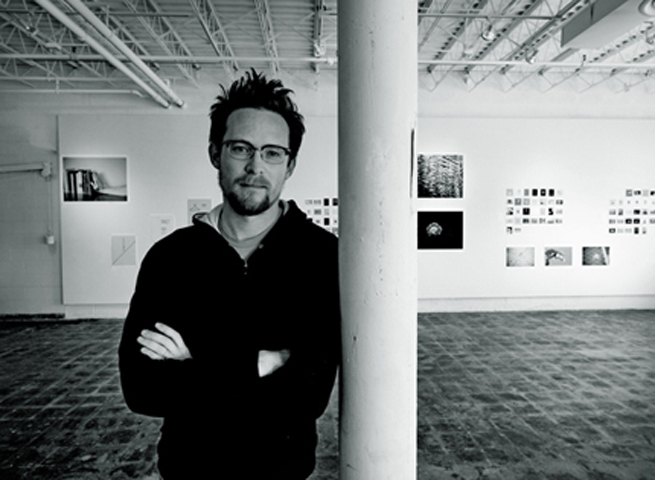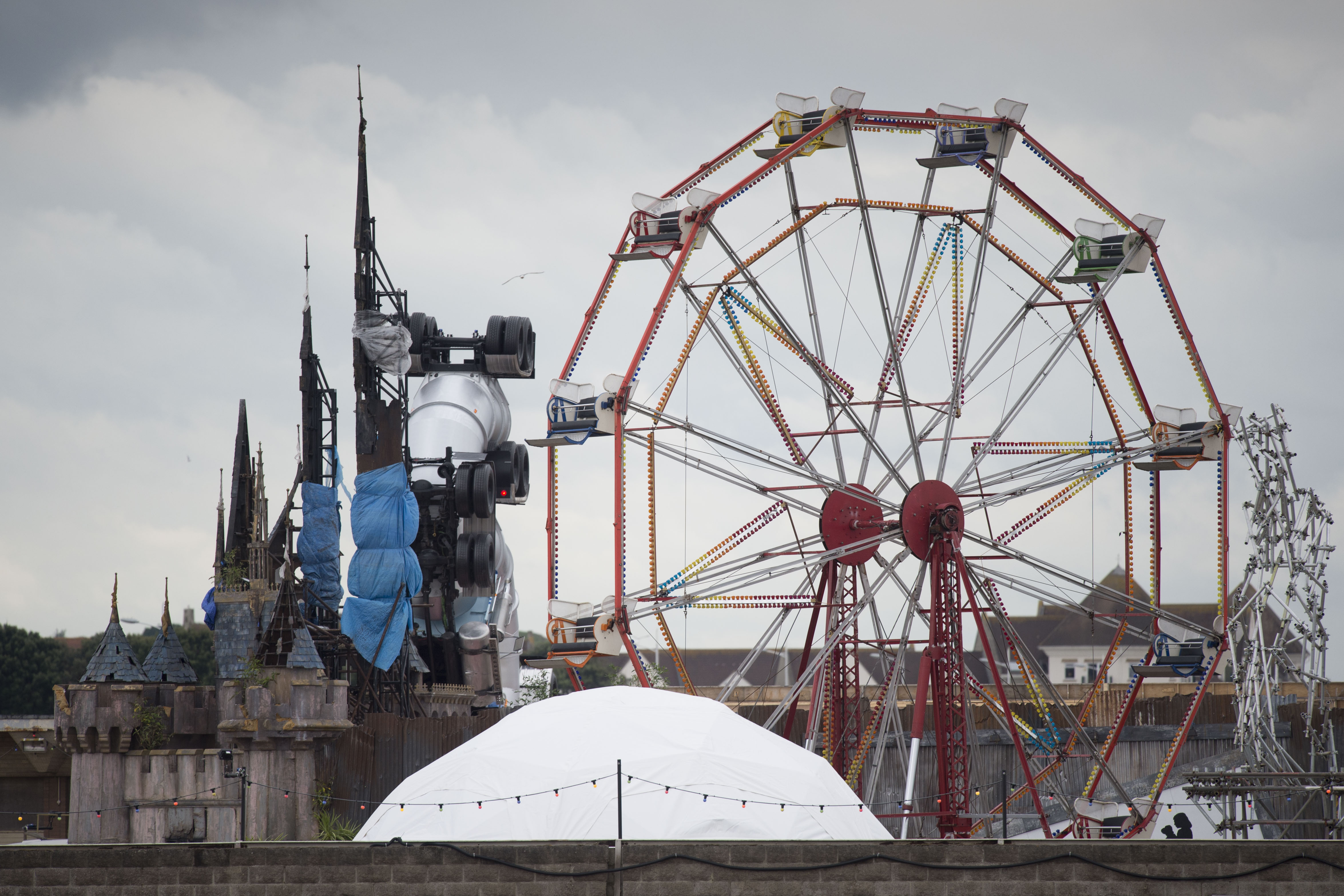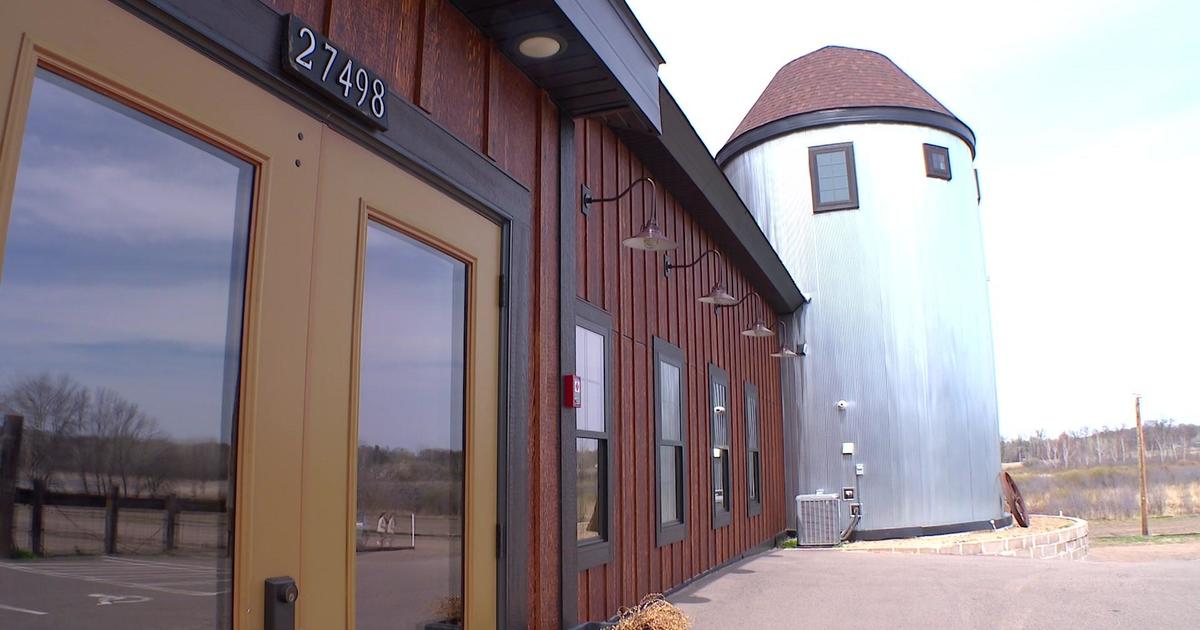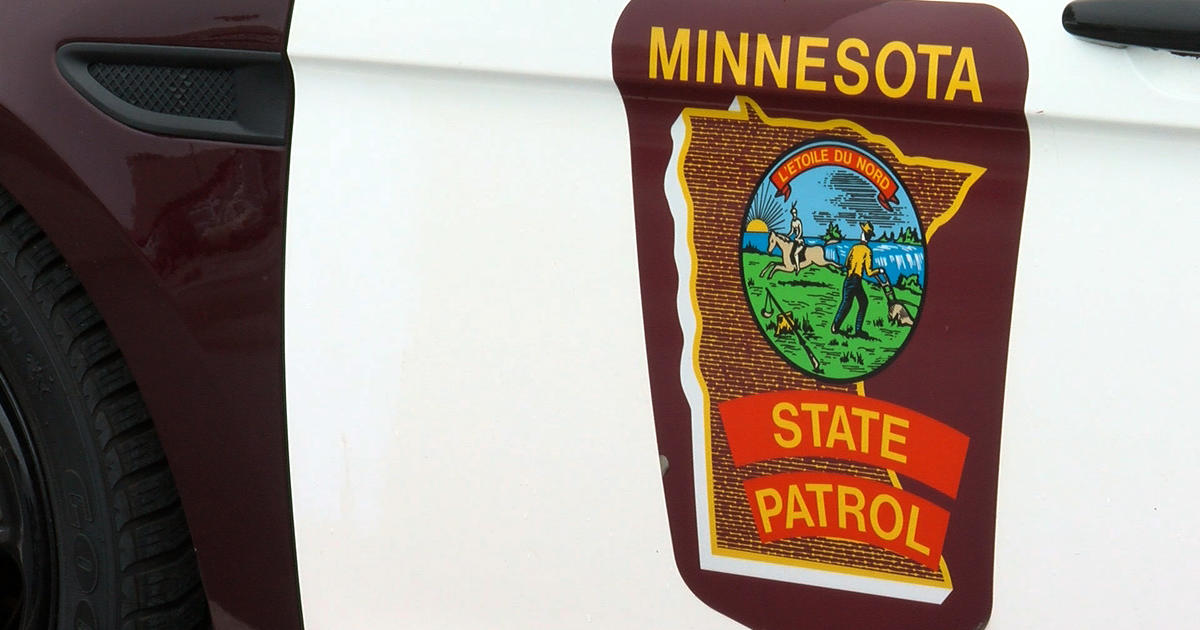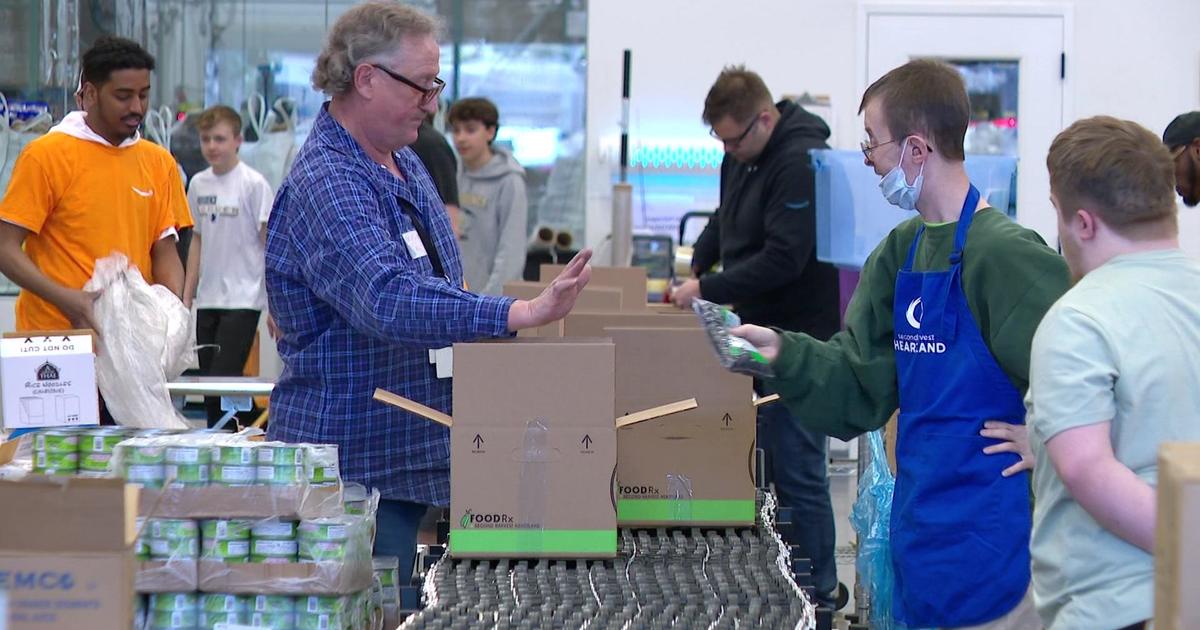Interview: Minnesota Artist Talks Being In Banksy's 'Dismaland'
Banksy, the British street artist renowned for his subversive works across the world, has created an art exhibition from the ruins of a dreary, abandoned amusement park in a seaside English town. He's calling the project "Dismaland," a parody on Disney's classic theme park, and a Minnesota-based artist was one of those he hand-picked to be part of the exhibition, which runs until the end of the month.
Brock Davis, who works as a creative director at space150 in Minneapolis, has more than a dozen pieces in the "bemusement park," which features work from more than 50 artists, including names like Damian Hirst and Stephen Powers.
I spoke with him about the exhibition, his work, Banksy, and being a creative person in Minnesota. You can also check out some of Davis' work by scrolling through his excellent Instagram account, which has more than 170,000 followers. Our conversation below has been edited for clarity and brevity.
-----
How did you get involved in the show?
Well, I received an email from Pest Control in February of this year. Yeah, at first, I just thought it was junk mail, because the subject, I believe it said, "Banksy – Private – Confidential." It was one of those things where I think I clicked on it because I saw the name Banksy and I just assumed it was junk mail. I didn't really pay too much attention at first.
They eventually sent another email, wanting to verify whether or not it was my email address, and then they mentioned that they had tried to contact me before, and that I may want to check my junk mail folder, because people often think their email are spam and they automatically go to junk. And so, I received an email and I did a little bit of my own trying to evaluate them online, seeing what Pest Control was. And I realized it was connected to Banksy, and I replied and said, 'Yeah, this is my email.' And I hoped that I wouldn't get a bunch of junk mail from a department store or something.
So you get an email…Did Banksy tell you what he wanted in his show? Did you exchange ideas? How does this work?
Well, in this case, he basically said hello. He said he was organizing a group exhibition for late summer, and he said he liked my work and wanted to know if I would be willing to participate.
He said the theme is an abandoned amusement park, largely because it will take place in an abandoned amusement park.
So did you just start working? How did you respond?
The only question I asked him was -- I never actually asked him how he found my work or how he had seen it – but I did ask who some of the other artists involved in the show would be. He did mention in his email that there would be some big names involved and some small ones, too. So, of course, that actually is true.
The show is a large collection of some unknown artists and some up-and-coming and some tried-and-true, well-established artists…He had mentioned Damien Hirst and Stephen Powers, so I thought that was pretty cool. And because he was curating the show, I figured that I would run my ideas by him, what I was thinking of doing. So, I was never told I had to do that – in a lot of cases when you do a group exhibition, you know what the idea is and you create the work. I've had exhibitions where I just sent work to the exhibition. But in this case, because his work is very conceptual and my work is conceptual as well, I felt like he would want to see what I was concepting for the show.
So I sent him a pdf with 40-50 ideas, I think, of what I would want to create for this show. And he saw the ideas, and it was a little nerve-wracking at first – I thought, what if he sees these ideas and decides to change his mind – but he did reply and looked at the work. He chose basically his favorite 26 pieces, and he gave his thoughts on the work and how it would flow in the show. And then he just said Godspeed, go make the work. So that's what I did and that's what I've been doing ever since February.
So it was like a full-time thing?
Well, it definitely could be considered a full-time thing. I also work fulltime as a creative director in town, so there's that.
How many hours a week did you put into a project like this?
I would say, maybe, 2-3 a day after work. On the weekends, sometimes a little bit more. Four-five hours on the weekend, sometimes more than that.
I did a daily art project in 2009, where I did a piece of work every day for a year. That actually ended up preparing me pretty well to get it done without other things having to be sacrificed at all.
So what did you end up making for the show?
In the end, of the 26 pieces that he chose, there were two installations, two sculptures and the rest were photographs. And those photographs would consist of a few new pieces that related to the theme of the show, some existing pieces, that may or may not relate to the theme, and then I had a photo series, which is in the show now.
And in that series, that idea required taking a turnstile – an old 1950s turnstile with the rotary arms, normally we see these in front of movies theaters or baseball stadiums and football stadiums – but the idea for this piece was to take the turnstile, which weighed about 170 pounds, to as many locations as possible, and photograph the turnstile in front of these vast landscapes, so that instead of there being something man-made and fabricated, it's more nature and beauty. The idea was to ship the turnstile to the exhibition and people, if they want to, can walk through the turnstile and they can view where the turnstile went in its journey.
What were the sculptures that you did?
The sculpture that made it in to the show was a actually a recreation of a sculpture that I made in 2009, which was a soda can and the can was made so that is looks like it's made from human flesh. So it has imperfections on it, it has little moles and freckles, it has like a modeled look to it. The hole to the can is like a random, kind of ambiguous orifice, for lack of a better word. It was a piece that when I originally made it a while back, I made it as a prop to be photographed. But in this case, I was making it as a permanent piece. And it was a piece that Banksy really liked, and I made that, and it is located appropriately in the "Freak Tent" at Dismaland, along with a Damien Hirst unicorn, some creepy plush animals, and some birthday cakes that have antlers growing out of them. Oh yeah, and some dinnerware with fingers and eyeballs glazed into it. So, yeah, lots of interesting work at the Freak Tent at Dismaland.
What was the other sculpture?
The other sculpture was carousel horse flies. So, there are carousel horses and these were the horse flies that would fly around the carousel horses. They were made completely to the actual size, so 3-inches high by an inch and three-quarters wide. There are three of these guys. Each one is a little different than the other. They are made of brass and wood, and they are made to look as if they are salvaged and found by the guys from "American Pickers." They had an interesting look to them, and he liked them quite a bit, but due to the sheer amount of sculpture work in the show, those ended up being shelved.
So what of your work that was accepted by Banksy actually made it into the show? How exactly does that work?
Ultimately, I had a total of 18 pieces. I originally had 26 pieces, he just edited a few out. That was the case with all the other artists as well. I figured that there would be an editing process, that's a fairly typical thing in group exhibitions.
So I take it you went to the show in England.
Yes. I went on Aug. 17 down for installation, so they invited all the artists to go out for a week, two weeks, or however much time they felt was necessary based on the work that the artist had to install.
What was your impression of Dismaland as a whole?
Well, it's a very unique way to do an exhibition. I guess, what I imagined in my head before was more like a typical exhibition, with a few rides here and there. But, the actual, final experience, it's like taking the Walker Art Center and dropping it in Valleyfair. You have a lot of things to grab attention. So the pace of walking through an art exhibition, looking at work and absorbing work, is very different in this exhibition. I would say, for a person to truly absorb Dismaland, would probably take a couple of trips. One could be just purely riding rides and looking at some of the larger sculptures. There's some incredible work in the show, and there's a lot of work in the show. But I guess I found that it was a lot to take in. As I said, I feel like it requires more than one visit to truly absorb what it all has to offer.
Some critics have said that the show is a bit heavy-handed in its anti-corporate, anti-Disney messaging. Do you find that a valid criticism, or perhaps a shallow way of looking at the show?
I think that the show is very true to what we see Banksy already doing in his work. That is the interesting thing about the show: most of the work in the show is actually made by other artists. He has 10 pieces in the show, but the main piece that he has in the show is the idea for this type of an exhibition itself. Everything that's in the exhibition definitely reflects the tonality in his previous work and the work that he does. So, I guess I'd say that…the messages that are communicated in the show, to me, seem like they're part of a Banksy show, but on a much larger scale, with more muscle behind it. So, it's not surprising to me.
Did you meet him?
We did not meet him. The best relationship myself and the other artists had was through his email correspondence, which actually is very good. He seems like an extremely charming person through email. The other thing is: His crew is a really great crew. And I always feel that…that the quality of a person can really come through the people that they surround themselves with. And if he's like his crew, then he's a pretty cool dude that I wish I had been able to meet.
Is there any piece in the show that impressed you most?
Yeah. First of all, the artists in the show, there are some phenomenal artists in the show and some phenomenal work. And the works are all very different from each other, yet it's very cohesive, too. That is telling in that's it's definitely hand-picked to have the feeling of cohesiveness. And yeah, I think my favorite piece is actually the Cinderella-paparazzi piece in the center of the park. That piece…it works on a couple different levels, you truly can understand it when you are actually there, it's harder to understand it when you haven't actually seen it. The fact that when you walk into this room and the horses are lying over and the princess is hanging over the door, and there's all these paparazzi and their flashes are just going off. Then, when people enter into the room, they all take their phones out and they start adding to the spectacle themselves. Even talking about it creates the ambiance to it. So, it's extremely conceptual, and it's actually very powerful. If you've seen photos of it online, it can seem a little more like something that shouldn't be taken seriously. But in the show, it's very powerful.
Who made it?
Banksy actually made that piece. The on the local level, it's actually a parody of Princess Diana and her car wreck. It's just a piece that works on a lot of different levels and it's a really fun thing to experience.
Another piece that I really liked too was Jimmy Cauty's. It's basically a massive city under civil unrest, with 3,000 miniature police all over the city, fighting rioters and some of them are just hanging out on the edge of the city itself. That piece is incredible to see in person as well.
Is there any way a person from Minnesota could see some of these works without traveling to England?
As far as I know, it's just one massive exhibit that runs for five weeks and then it's completely gone. You know, if people want to see images of the show, there are plenty of them online.
I'm curious about you being a creative person in Minnesota. What keeps you here?
I'm originally from Georgia, from Atlanta. My family, a lot of them are still in down in Georgia, but I actually moved up here in '95 to work in advertising. Minneapolis has always been a very strong, creative advertising and design town. It's always been a pretty creative city. So I moved up here to get my career started and try to make the most creative work that I could. I've been doing that for a very long time, and I love the fact that I think that Minnesota-Minneapolis-St. Paul is one of the most creative areas in the country. And I think that most of that has to do with the weather, the fact that it's so cold outside that everyone is inside biding time by making art and music and coming up with ideas. I mean, it's just a really fun city to live in creatively, and it's a great city to raise a family in, too. I have a couple kids and my wife and my dog and a cat. And, I don't know, I just don't think you have to be in London or New York or Los Angeles to be defined as a creative person, by any means.
You have big followings on various social media platforms, like Instagram and Flickr. Can you talk about how that online avenue is available to artists now and how big it is?
It is big. In a lot of ways, I was in the right place at the right time when I first started getting back to making more creative work. Around 2007, I started doing more of that. At about that time, there was a lot of art blogs, blogging in general, Twitter. A lot of these platforms were in an infantile stage. So I started making work and these blogs started becoming places that were perpetuating this work. So I realized, Wow, if you're a person that makes work, there are people out there who want to talk about that work and share it and help other people see it. That's only made possible by the digit age that we are in now. Bands don't have to tour from town to town to town – they still have to do that to some degree, of course – but there are so many ways for people to be discovered, whether they be a musician or an artist. It's a good time to be a creative person, I suppose.
